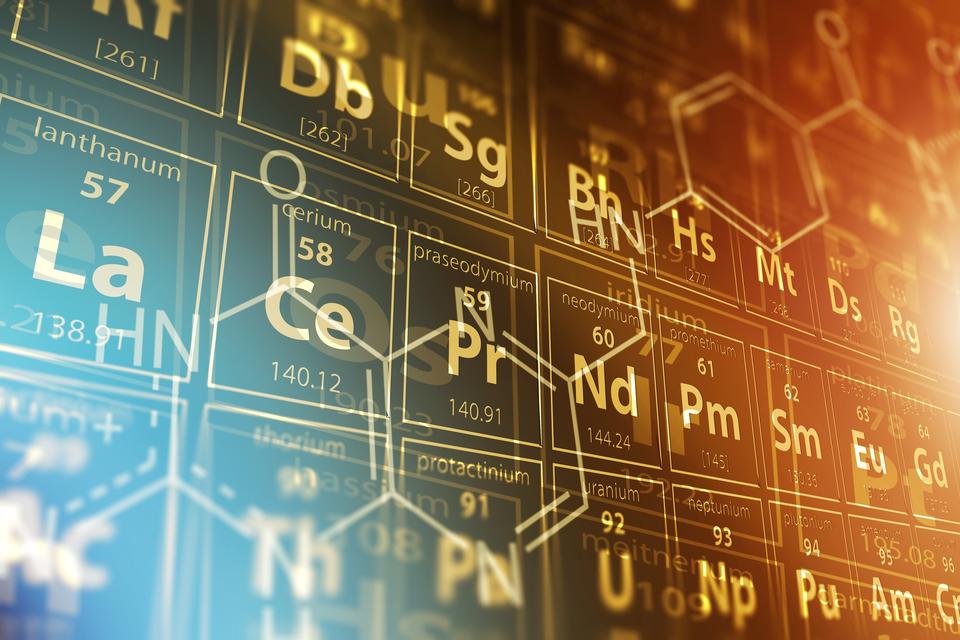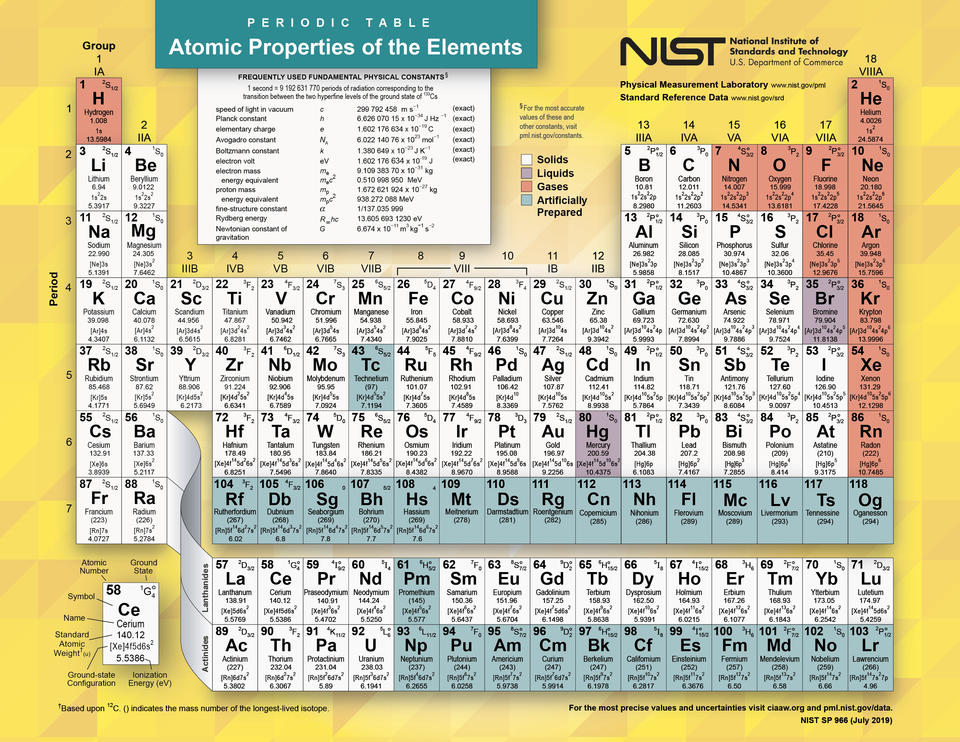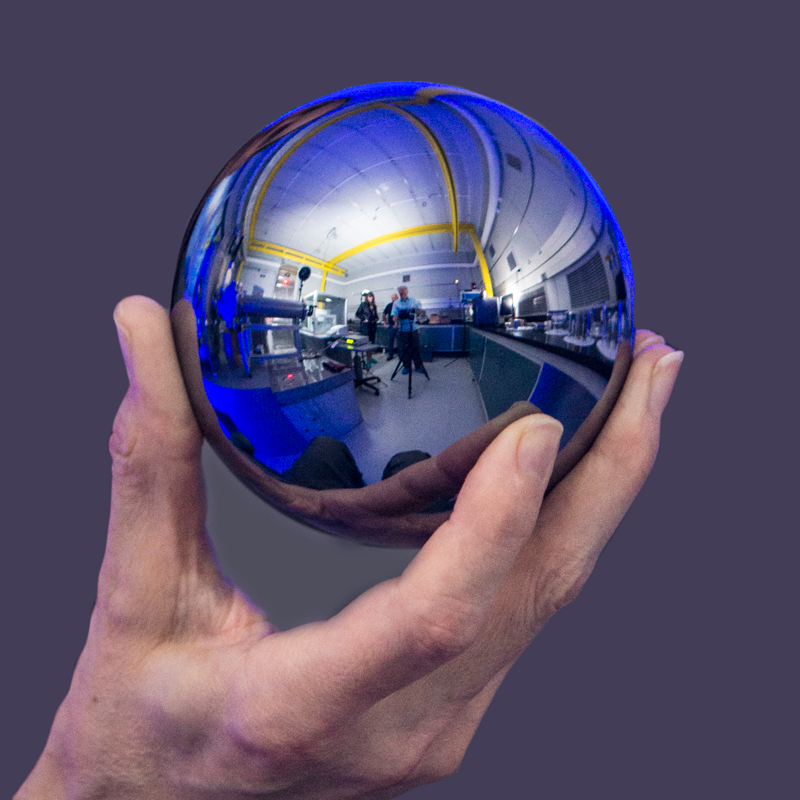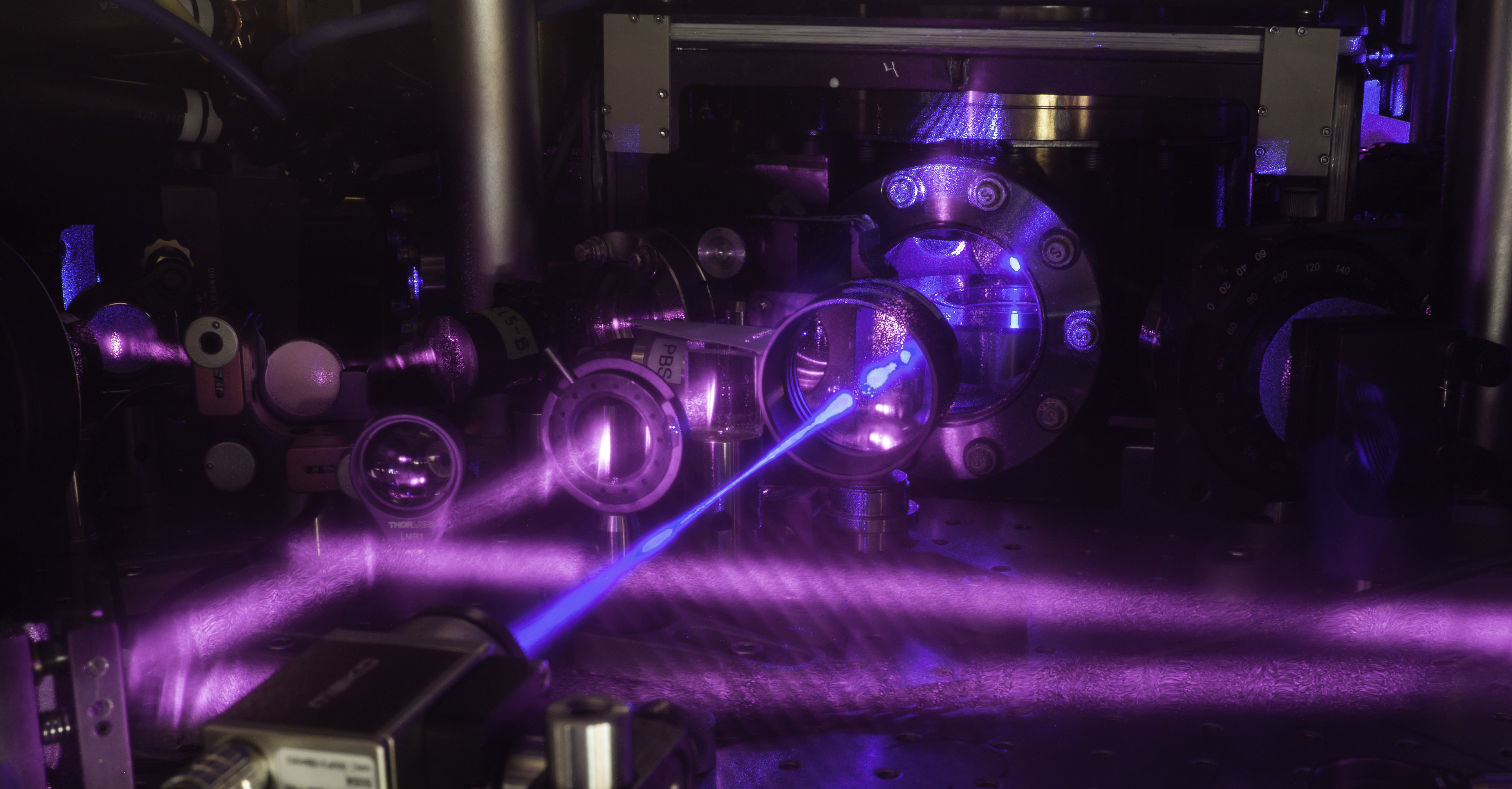History of the Periodic Table Reading Assignment

Credit: welcomia/shutterstock.com
This is the International Twelvemonth of the Periodic Table, and while I've been (accurately) accused of being a physics fanboy, I'm hither to tell you that this famous chart isn't but about physics, chemical science and the other sciences. It's likewise about mathematics and engineering and even nonscientific areas of noesis including history, geography and the origins of words.
First, a quick review of what the periodic table is. It'due south a chart of all the chemic building blocks of matter. To date, humans have observed 118, both natural and artificially made. Each of these edifice blocks, known as diminutive elements, contains a positively charged cadre (known as the nucleus) that is (usually) surrounded by a deject of negatively charged particles called electrons. Zooming in on the nucleus a piffling more than, we find positively charged particles known as protons and neutral particles known every bit neutrons.
The one characteristic that defines an atomic element is its atomic number, that is, the number of protons it has in its nucleus. Hydrogen has one proton, and then its atomic number is 1, and uranium has 92, and then its atomic number is … 92. If there are an equal number of electrons and protons, the atom is electrically neutral. If there are fewer or more electrons than protons, the cantlet is electrically charged and known as an ion.

The official NIST periodic table.
Credit: N. Hanacek/NIST
Each atom can have several dissimilar versions, known as isotopes, in which there are different numbers of neutrons in the nucleus. For example, hydrogen ordinarily only has i proton and no neutrons, simply an isotope known every bit deuterium or "heavy hydrogen" too contains ane neutron.
The deuterium isotope helps create heavier elements inside stars, makes certain drugs more than effective, and could exist the key ingredient for making clean fusion energy. It was discovered in the 1930s at the National Plant of Standards and Engineering science (NIST, so known as the National Bureau of Standards), where it was identified by Harold Urey of Columbia University, who won a Nobel Prize for the feat.
(Alas, no prize for NIST'south Ferdinand Brickwedde. That'south fine.)
So, already you lot tin see this 1 isotope's importance in astronomy, pharmaceuticals and energy. And, yet, despite its importance, it'south a rarity compared with ordinary hydrogen, the most abundant ingredient in water, most stars and the universe in general. It'southward amazing how 1 element in the periodic table is found in so many dissimilar kinds of stuff in our world.
In 1869, Dmitri Mendeleev, a Russian pharmacist, created the first periodic table by arranging the diminutive elements into columns and rows. Diminutive elements in the aforementioned columns and rows accept certain backdrop in common. For instance, atoms in the rightmost column, known as the noble gases, may differ greatly in mass from light (helium) to heavy (such as radon), merely what they have in common is that they don't unremarkably participate in chemic reactions.
The genius of Mendeleev was that he left spaces for elements yet to be discovered, and in and then doing he predicted their existence, such equally gallium in 1875 and germanium in 1886. As you may accept guessed, the latter was named later on Deutschland (the domicile country of discoverer Clemens Winkler). As for the quondam, Paul Emile Lecoq de Boisbaudran named the element "gallia," afterwards Gaul, the Atomic number 26 Age region that includes present-solar day France.
And then, if yous love history, literature and words, the periodic table is for you. Some elements are named after towns: Strontium comes from the Scottish hamlet of Strontian, where the mineral containing the element was found. Some take their names from mythology. The chemical element vanadium is named after the Norse goddess Vanadis. More recently discovered elements have tended to be named later on real people, such as meitnerium (Austrian-Swedish physicist Lise Meitner was a co-discoverer of nuclear fission). Naming elements after places has too been trending. For instance, tennessine comes from the state of Tennessee, the domicile of Oak Ridge National Laboratory, which performed key work to produce this particular element.

Close-up of a sphere of virtually pure silicon.
Credit: NIST
If yous like engineering science, the periodic table is the ultimate canvas for innovation. The semiconductor industry has used the periodic tabular array to get beyond standard silicon-based devices. Semiconductor engineers have used unlike combinations of elements from the III and V columns of the periodic table to create new semiconductor alloys, such as gallium nitride (GaN) and indium nitride (InN), each having different advantages. For case, gallium nitride can produce light over a large number of wavelengths, including the blue light used in smartphone screens. Indium nitride can blot low-cal over a narrower range of wavelengths, making it a great candidate for solar cells, as it absorbs the specific wavelengths of calorie-free most mutual from the sun.
And, of form, there'south materials engineering, too. Engineers similar to combine the lightweight metal titanium with other elements such as aluminum to create alloys for shipping and other vehicles. Alloys of magnesium and other elements such every bit golden are finding utilise in medical implants for bone repair. The cool thing well-nigh these alloys is that they are biodegradable, so they disappear afterwards serving equally scaffolding for new os growth.
NIST's Materials Genome Initiative is a modern embodiment of the spirit of the periodic table, using the power of computing, including artificial intelligence, to combine the elements into new materials for desired applications, such equally less-expensive-to-make nickel coins and "metallic glasses" for stronger building materials.
Precision timekeeping may not be something you associate with the periodic table, but for NIST researchers who build cutting-edge diminutive clocks, it could exist the first thing that comes to mind. Since 1967, the 2d has been defined by atomic clocks using cesium atoms. If cesium atoms are exposed to microwave radiations at a frequency of nine,192,631,770 hertz (cycles per second), they will modify quantum energy states. Using an electronic detector to measure if the atoms accept changed states, NIST scientists keep the generated frequency locked to the atomic transition, making a very stable frequency output.
Diminutive clocks allow united states to precisely divide the 2d into billionths of parts and beyond. Precise time measurements are useful for time-stamping financial transactions, synchronizing communications and data, and navigating using the Global Positioning System (GPS). More than recently, NIST researchers are making clocks with other atoms such equally strontium, ytterbium, mercury and aluminum. The researchers modify the quantum states of these atoms using optical radiations, with frequencies of hundreds of trillions of cycles per 2d (much higher than the microwave radiations used in cesium clocks). These "optical clocks" enable the second to be split into even smaller intervals that could be useful for things such as detecting hole-and-corner geologic deposits and fifty-fifty dark affair.

JILA's three-dimensional (3-D) quantum gas atomic clock consists of a filigree of calorie-free formed by three pairs of laser beams. A stack of 2 tables is used to configure optical components around a vacuum chamber. Shown hither is the upper table, where lenses and other optics are mounted. A blue laser beam excites a cube-shaped cloud of strontium atoms located behind the round window in the middle of the table. Strontium atoms fluorescence strongly when excited with blue light.
Credit: G.E. Marti/JILA
If y'all love numbers, well, of form, the periodic table is filled with them. Each atom on the table has a bevy of quantities. Besides atomic number, in that location's atomic weight and ionization free energy (the amount of energy information technology takes to remove an electron from that atom).
How did we get such accurate numbers? As physicists developed quantum theory, they made highly precise (and remarkably right) calculations for the energy levels of electrons in atoms. Among and then many other things, chemists determined how the arrangement of electrons in atoms influences chemical reactions. All this work past the scientists involved land-of-the-art mathematics.
Once scientists developed the fundamentals, withal, there was still a lot of work to do in understanding the properties of each of the elements. Who is involved? Measurement scientists, such as the people who piece of work at NIST.
NIST mathematician Jim Sims explained to me: "As the 'standards' people, we are the ones who collect the world'southward experimental and theoretical data on diminutive properties of the elements and critically evaluate it to come up with the best estimate of the numbers in the table at any time. Mathematics certainly goes into that assay, and more fundamentally whatsoever atomic structure adding relies heavily on both math and computational science."
I asked Jim what developments in mathematics led to the periodic tabular array that we know today. "Rather than whatsoever specific instance," he said, "all I tin come up upward with is the fact that modern physics, chemistry and mathematics are intimately entwined."
And I'll have things a step further by maxim that so many other fields are intertwined in the periodic table. One pocket-sized nautical chart is both a source of noesis and a springboard for creativity, in then many fields. It'south and so much more than a poster in your high-school chemistry class; it's a roadmap for the future.
A impress version of the official NIST periodic tabular array tin exist downloaded hither.
Encounter NIST videos and other resources on the International Yr of the Periodic Table here.
Source: https://www.nist.gov/blogs/taking-measure/periodic-table-its-more-just-chemistry-and-physics
0 Response to "History of the Periodic Table Reading Assignment"
Postar um comentário